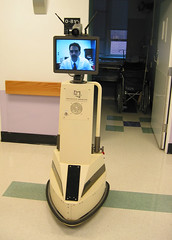Chairs:William Dutton, Oxford Internet Institute;
Craig Calhoun, President, Social Science Research Council.
Panelists to include:
- Vera Franz, OSI, London
- Alison Bernstein, Ford Foundation, New York
- Sean O'Siochru, NEXUS, Dublin
- Karen Banks, Association of Progressive Communication, London
- Richard Allen, Cisco Systems
Date: 02 February 2006, 17:00 - 18:30
Location: Oxford Internet Institute, 1 St Giles, Oxford, OX1 3JS
Attendance: This panel discussion is open to the public, but places are strictly limited. If you are interested in attending please email your name and affiliation, if any, to events@oii.ox.ac.uk. As places are so limited they will be allocated on a first-come first-served basis.
This event will be webcast and available to view on our website at http://webcast.oii.ox.ac.uk/ from Friday 3rd February 2006.
Abstract
New media, such as the Internet and other convergent information and communication technologies (ICTs), are now widely used in ways that are reshaping political, economic, cultural, legal, scientific, and other activities. The interrelated outcomes in the public sphere of these diverse uses of the Internet and new media by communities, individuals, and private and public organizations are leading to wide-ranging societal transformations, both locally and globally. The pervasive nature of this growing digital mediation and governance of social life has stimulated rethinking of research practices, institutional arrangements, and policies
needed to provide better accounts and understandings of such transformations.
Over the past decade, digital convergence has been accompanied by a partial realignment of research around the technologies themselves, most notably in the form of efforts to build better-integrated, more-fluid models of
engagement across social and technical disciplinary boundaries. No established field, dominant paradigm or appropriate institutional restructuring has emerged to take advantage of the new multidisciplinary research opportunities. However, distinctive approaches and themes for research on the social dimensions of new media and related ICTs-such as the relationship between ICTs, public life, media, and governance-have been created within communication and media fields, information studies, social informatics, computer science, law, the humanities, and the core social sciences. Some of these new configurations have acquired stability within or
between fields; in other cases, they are characterized mostly by isolated experiments.
This is an open session designed to stimulate and inform an invited workshop to be held on 3-4 February. Panelists in policy, practice and advocacy fields will provide brief perspectives on the intersection between research and more applied agendas. It is an opportunity to reflect on what constituencies outside the research field expect from information, communication and media studies. Can it meet these expectations? Under what
conditions?
For further information on all OII events, please refer to our website
Kind regards
The Events Team
Oxford Internet Institute
1 St Giles
University of Oxford
Oxford
OX1 3JS
Tel: +44 (0)1865 287209
Fax: +44 (0)1865 287211








